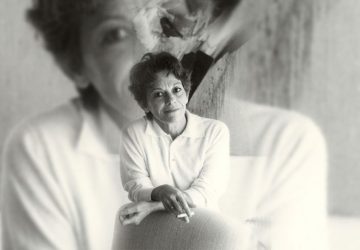Listen to the article
On November 26, the curtain was dropped on the fifth fall season of the Musicales du Liban in Paris, a highly colorful performance by the Sedecim quartet. The concert was a musical tour-de-force worthy of the highest eulogy.
Under the languid sunset of humanity, the quarter-jack played, forlorn, his sinister lamento. The bells of this loyal teller of time who, in times of yore, told the hours, are now ringing with a deathly and insignificant monotone, like the despondent echo of this decaying humanity. In this arrogant, insensitive, and polarized world, dehumanization seeps through insidiously and inexorably. The universe seems as if suspended in a fragile balance, held captive by the gloomy hums of this " librettist of the shade ", as expressed by the poet Alain Tasso in his collection of poems " Soliloquies of a quarter-jack ", a provocation of the abyss to bring about newfound astonishment. However, within this poignant requiem that life has morphed into, music rises like a redeeming epiphany, paving the way for the resurrection of a lost humanity.
Through this musical communion, borders fall, and a singular kiss transcends, a living allegory of universal harmony, to embrace the universe as imagined by the enlightened spirit of Friedrich von Schiller (1759-1805) and immortalized by the infinite genius of Ludwig van Beethoven (1770-1827). All through this fall edition, Les Musicales du Liban was the materialization of aspirations, reminding all that music has the power to scour depths, extract the emotions of oblivion, and link souls together ineffably. The organizers of this musical celebration, notably the musicograph Zeina Saleh Kayali and pianist Georges Daccache, have emerged as new quarter-jacks, distilling time through a plethora of Western and orientalist works, shedding light on Lebanese composers.
Rivers of Melody
On November 26, the imposing Notre-Dame du Liban cathedral in Paris – whose French composer Gilbert Amy loved its resonance and the beauty of its acoustics – was the dedicated venue for the last concert, scheduled at 4 pm. The setting of the sun slowly occurred, with autumnal languor, ornamenting the sky with an infinite palette of brazen tints. In this nascent gloom, the musicians of the Sedecim quartet took their seats, their instruments minutely tuned in situ for a musical journey along the melodic rivers of Iyad Kanaan (born in 1967), Bechara el-Khoury (born in 1957), and Antonin Dvorak (1841-1904). The evening started with Iyad Kanaan’s oriental quartet in D minor. Seconds after the inaugural piece began – in allegro furioso – a captivating melody with orientalist undertones resonated. This musical exoticism, illustrated by Kanaan, was characterized by the typical and frequent use of the augmented second, coupled with the repetitive monocord staccato technique on bass and a rhythmic ostinato, both thoroughly interpreted by the cello. Furthermore, the harmony was limited to the abundant use of the fifth interval.
Opulent Sounds
The French quartet bathed the audience in sounds both opulent and comforting, revealing an interpretative depth punctuated by perfectible intonations and articulations. However, this minor hurdle did not get in the way of the interpretation finesse that reached its peak in the andante, the second theme of the first movement. It seemed that the first violinist, Laura Daniel, engaged in improvization, as the expression was instinctive and singularly natural. The listeners basked in the splendor of a suave sound generated by a silky bow that engulfed the instrument’s lament with a poignant vibrato. In the second movement, the adagio, the four musicians gave a masterful performance, revealing an unprecedented eloquence stemming from their minute attention to harmony. The accuracy when it comes to the articulation of melodic phrases, and the delicate balance of registers are further proof to the artists’ mastery.
Ever ingrained in our minds is the moving dialogue between the cello and the first violin, reverting back to the same melodic phrase, and the showdown between the second violin and the alto, bravely exploring melodies integrating three-quarter tones. None of the riches of Iyad Kanaan’s partition are neglected, and the most subtle details of levantine musical composition are delicately highlighted without ever falling into excess, putting forth the profoundness and finesse of this interpretation. That being said, this exquisite precision was somewhat compromised in the third movement, the allegro, by undue precipitation, bringing forth unwelcome inaccuracies. The shade brought about by this haste has unfortunately veiled numerous musical gems that abound in this partition. Alas, they would not see the light that time.
Musical Purity
During the second performance of the evening, Image op.32, " The Night " for string quartet, composed by Bechara el-Khoury and dedicated to Zeina Saleh Kayali, the young musicians succeeded in blowing away the thick shroud around the partition. Indeed, El-Khoury’s work does not reveal itself early; it requires the active participation of the listener, prompting them to untie the knots on the way to musical purity. The first theme, Misterioso, unveiled the mysteries of the falling night, and, instead of depicting nocturnal images, it proceeded to convey fugacious impressions of the rising darkness. The work in question showcased its impressionistic undertones and captured brilliantly the mysterious atmosphere of this evanescent night, stressed by a subito piano and a subito forte that brought about a lively succession of lights and shadows. In that same context, the management of the many musical phrases, ensured by the Sedecim quartet – the minute equilibrium between the voices particularly – was remarkable. The partition’s subtleties remained perceptible, and the result was far from deafening. The second theme, Lyrique, was shaped with elegance and panache, demonstrating once more Bechara el-Khoury’s mastery of the art of melody, drenched in the pervasive anatolism that typifies his work.
Renewed Sensitivity
This musical evening reached a high with its main act, the string quartet no.12 in F major, op.96, called " American ", of Antonin Dvorak. This romanticism masterpiece, imbued with the folkloric sounds of the new world, stood out thanks to a rhythmic liveliness and a rich melodic palette. From the early notes of the allegro ma non troppo to the last chords of the Finale vivace ma non troppo, not a single moment of sloppiness would tarnish this robust, energetic, and sensitive interpretation. The second movement, the lento, drenched in oniric lyricism, was a mixture of quintessential Czech music and bluesy chants: the quartet created a riveting narrative tension that seamlessly combined clear melodic lines, all while preserving the passionate aspect of the partition itself. All came to life in an uninterrupted dance, except for a few notes from the first violin that seemed loose and shrill. The musicians listened to each other and interacted, staying true to the pages and the passing subtleties, including those of the scarlet tanager trills in the third movement, the molto vivace. In the last bars, echoing a longing for the homeland, the piece ended in a musical climax—a triumph.





